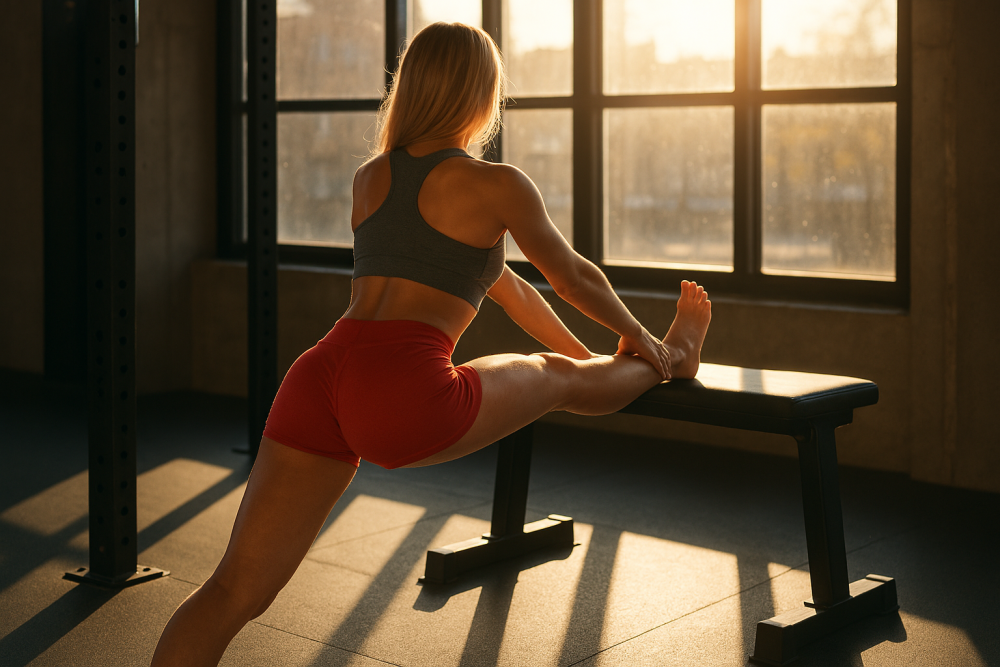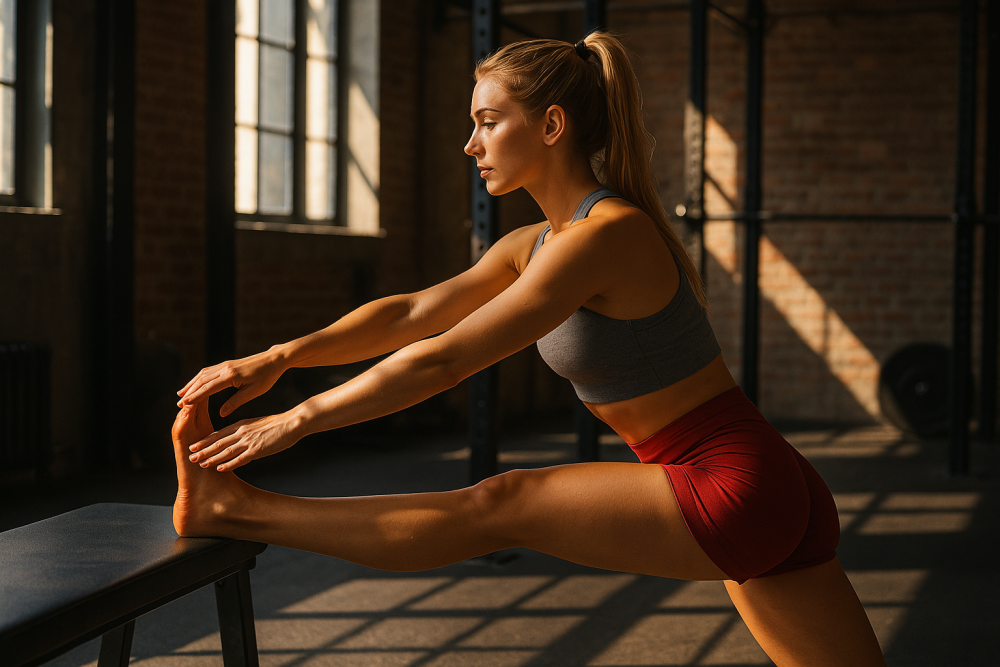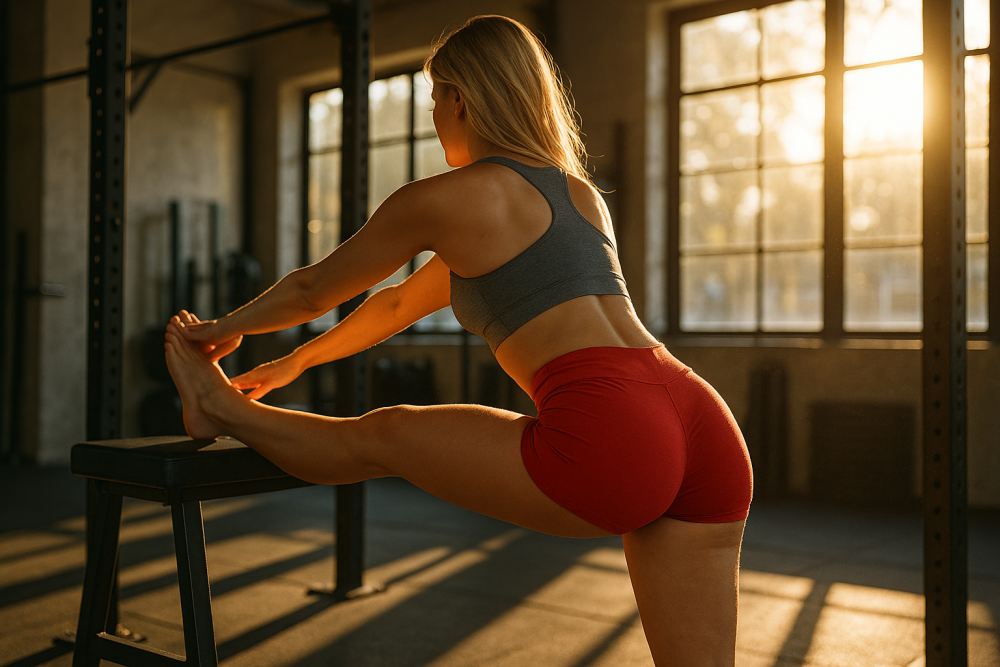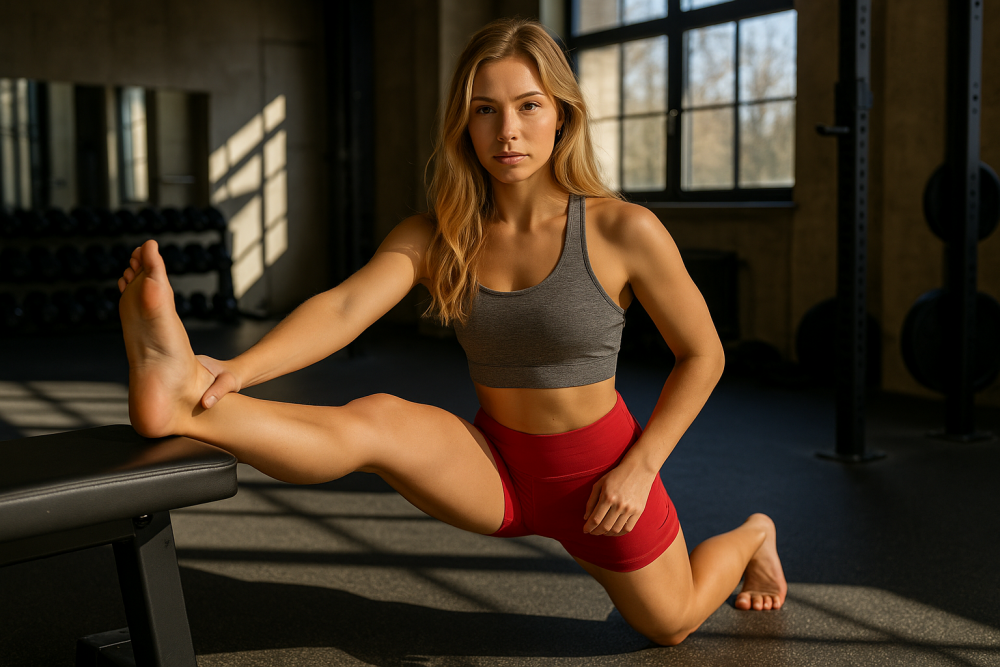Contents
- 1 Elevated Hamstring Stretch
Elevated Hamstring Stretch
A Simple Yet Powerful Move for Flexibility and Recovery
The Elevated Hamstring Stretch is a highly effective flexibility exercise that targets the hamstrings, calves, glutes, and even the lower back. By elevating one leg, you increase the range of motion and isolate the stretch more effectively than standard floor-based hamstring stretches. This makes it ideal for athletes, martial artists, runners, and anyone aiming to improve their mobility and prevent injuries.
In this article, I’ll break down the benefits, guide you through the proper technique, suggest variations, and share recommendations to get the most out of this stretch.

Benefits of the Elevated Hamstring Stretch
- Improves hamstring flexibility: Helps lengthen tight hamstrings, increasing mobility and reducing stiffness.
- Enhances athletic performance: Aids in smoother kicks, sprints, and dynamic movement.
- Reduces risk of injury: Flexible hamstrings can help prevent muscle strains and lower back issues.
- Improves posture: Releases tension in the posterior chain, which contributes to a more upright and balanced posture.
- Supports recovery: Ideal for post-workout cooldowns and injury prevention routines.

Elevated Hamstring Stretch Recommended Sets and Duration
- Beginner: 2 sets per leg, hold for 20–30 seconds
- Intermediate: 2–3 sets per leg, hold for 30–45 seconds
- Advanced: 3 sets per leg, hold for up to 60 seconds
- Rest about 10–15 seconds between sides. Breathe deeply and never force the stretch.

How to Do the Elevated Hamstring Stretch – Step-by-Step Guide
- Step 1: Choose Your Elevation
Use a stable object like a chair, bench, or step that aligns with your hip height or slightly below. Avoid anything unstable or slippery. - Step 2: Position Yourself
Stand tall and place your heel on the elevated surface. Keep your leg straight but not locked, with toes pointing toward the ceiling. - Step 3: Square Your Hips
Face your hips forward and align them evenly to avoid rotating your pelvis. - Step 4: Hinge from the Hips
Gently lean forward while keeping your back flat. Do not round your spine. You should feel a deep stretch in the hamstring of your elevated leg. - Step 5: Hold the Stretch
Hold the position, breathing deeply. Avoid bouncing. Focus on relaxing into the stretch with each exhale. - Step 6: Switch Sides
After holding for your desired time, slowly come up, release the leg, and repeat on the other side.

Elevated Hamstring Stretch Variations
Flexed Foot Version
Flex your foot toward you to include a deeper calf stretch. This increases the intensity along the entire posterior chain.
Standing With Forward Fold
Hold your elevated foot with both hands while hinging forward. This variation adds a deeper stretch and balance challenge.
Elevated Hamstring with Twist
Once in the stretch, add a slight torso twist toward the elevated leg. This engages the obliques and helps deepen the hamstring stretch.
Resistance Band Assisted
Use a resistance band around the arch of your foot and gently pull for an enhanced stretch while maintaining good form.
Pro Tips and Recommendations
- Warm up first: Do a light cardio warm-up or dynamic leg swings before static stretching.
- Use consistent breathing: Inhale through your nose and exhale through your mouth to relax into the stretch.
- Stretch both legs evenly: Don’t neglect your non-dominant side.
- Stay consistent: Stretch at least 3–4 times per week to see real flexibility gains.
- Progress slowly: Don’t push to discomfort—tightness should ease gradually with regular practice.
Final Thoughts
The Elevated Hamstring Stretch is a valuable tool for anyone looking to improve flexibility, reduce muscle tension, and support athletic recovery. Whether you’re kicking higher in martial arts or just aiming to touch your toes without strain, this stretch belongs in your routine. Add it to your cooldown or mobility session and feel the difference in how your body moves and performs.
Follow our Social Media!












